
Recognizing that young Americans have a gap in their understanding of geography and their roles as global citizens, National Geographic “created Geography Awareness Week to raise awareness to this dangerous deficiency in American education and excite people about geography as both a discipline and as a part of everyday life… Each third week of November, students, families, and community members focus on the importance of geography by hosting events; using lessons, games, and challenges in the classroom; and often meet with policymakers and business leaders.”
To celebrate Geography Awareness Week, Falvey Memorial Library and the Department of Geography and the Environment (GEV) invite you to attend this week’s geography-focused events, to check out our list of Geographic Information Systems (GIS) projects below, and to follow along with Falvey’s blogs sharing projects and discussions from GEV’s students.
GIS Projects
Today we talk about geospatial analysis in the utilities industry, urban geography’s impacts on human health, and how geographic information system (GIS) goes hand-in-hand with environmental security.
Geospatial Analysis in the Utilities Industry
Since graduation, I have been working as a Business Analyst in the Consulting division of Primera Engineers. As consultants, we provide a variety of services for our clients, from GIS work to project management, often for gas and electric utility companies.
One of my projects currently underway leverages high-accuracy GPS technology to locate gas utility pipelines with sub-inch accuracy, enabling our team to revise historical sketches in GIS and collect data detailing the pipeline materials, assets, and locations. This information is vital to preventing pipeline damages during construction, and improves the utility’s ability to find, repair, and replace its pipelines.
Another of my primary projects is reviewing and revising the emergency response plan for one of our gas and electric utility clients. Responding to a gas event incorporates core geographical questions, such as where, when, why, and how the emergency occurs. In the emergency response plan, my team accounted for severity, event type, procedures, notifications, and other factors while simultaneously streamlining the plan. The process of developing a clear and efficient response plan often utilized the skills I developed through my geography classes, where my course work often focused on connecting diverse details through time and place.
One of the most geographically applicable events is storm response. Mid-Atlantic gas and electric utilities exist at the nexus of two storm systems, where tropical storms from the Gulf Stream and Canadian Nor’Easters can deliver intense rain and snowstorms. Preparing for a storm emergency in the Mid-Atlantic is innately geographical, as it hinges upon utilities’ locality and how weather patterns impact the area they service. Storm response begins before the storm arrives, with gas and electric utility companies conducting pre-planning meetings to prepare for landfall. In a changing climate environment that forebodes more frequent and intense storm systems, a timely and effective emergency response plan is vital — enabling utility companies to prepare for climate events and better service their customers.
These projects are only two examples of the work I do at Primera. I have had the opportunity to work on a variety of projects that tap into my geographical skills. I particularly enjoy observing how different projects connect with each other through common goals, regulations, best practices, and more. At work, I often find that I am thinking holistically, a skill that I honed studying geography. I connect my work across utilities, technologies, processes, communications and more, working with my team to advance our clients’ goals.
Annelise Laughlin is a Villanova GEV undergraduate alum from 2021. She majored in Geography and Communication and was a 2021 Falvey Scholar.
Urban Geography Impacts Human Health
At present, just over half of the world’s population lives in cities; by 2050, two out of three people will call a city their home. As urban populations grow at a rapid pace, it becomes increasingly important to consider air quality and the impact that it has on human health. Though great strides have been made in recent years to ensure that people have access to clean air, air quality management can still be quite difficult in cities. After all, cities are very complex environments; many potential sources of air pollution exist (traffic, industry, and energy production just to name a few…), and the impact of each of these sources can change depending on the time of day and where they’re located in the urban environment. In order to effectively address air quality issues worldwide, we need to know when – and where – air pollution poses the greatest risk to people.

Where in the city does air pollution pose the greatest threat to human health, and what can we do about it?
To this end, I have been conducting research in Philadelphia in conjunction with Drs. Peleg Kremer and Kabindra Shakya to find where and when concentrations of air pollutants – specifically, fine particulate matter (PM2.5) – are highest. Using a van equipped with GPS and air pollution monitors, we drove more than 300 miles throughout Philadelphia and collected over 400,000 data points to gain a deeper understanding of PM2.5 concentrations than is possible with conventional monitoring methods.

Gearing up for the first of many drives in Philadelphia!

Through our mobile monitoring campaign, we found that the highest PM2.5 concentrations were measured in the North Delaware and River Wards planning zones. However, knowing where these concentrations are highest is only half the battle; we also need to consider why concentrations are elevated in these areas. With high resolution land cover raster data combined with parcel data from the City of Philadelphia, we were able to lend essential spatial context to our air pollution data. Ultimately, we found distinct relationships between particulate matter concentrations and specific urban structure patterns. By identifying urban structure patterns that could potentially contribute to higher levels of particulate matter pollution, we can help city planners and officials make more effective policy and design choices to improve air quality as cities like Philadelphia continue to grow and develop worldwide.
If you would like to learn more about air pollution in Philadelphia and how the urban environment can influence air quality, feel free to check out my research articles, Mobile Monitoring of Air Pollution Reveals Spatial and Temproal Variation in an Urban Landscape and Predicting citywide distribution of air pollution using mobile monitoring and three-dimensional urban structure!
Lucas Cummings is a Villanova GEV Masters of Science in Environmental Science (MSES) alum from 2021.
GIS Goes Hand-in-Hand with Environmental Security
My name is Justin Weber, and I am a second-year master’s student here in GEV. I am currently finishing up my program and am preparing to defend my thesis in November 2021. GIS and geography are central to my research. My research is based in environmental security, a field that examines how climatic and environmental factors influence the development, outbreak, and resolution of both peaceful and violent conflicts across the world. Environmental security lends itself to inter-disciplinary collaboration, connecting subjects like political geography, ethnography, remote sensing, and physical geography. Tabular records, interviews, climatic data, and other data can all be integrated to examine the relationship between environment and conflict. In my thesis, I explored the relationship between land quality and violent conflicts between farmers and herders in Nigeria. These conflicts pose a grave human and economic risk to many people in Africa’s largest and fastest growing country. My goals were to examine if, and to what extent, changing climate influenced the development of conflicts.
Within this project, I operated almost exclusively in ArcGIS Pro with a variety of different data types and datasets. Land quality data were created from remotely sensed vegetation and precipitation data. GIS was immensely valuable because it allows analysts to take news reports of conflicts and geolocate them for analysis. Conflict data were integrated from three independent data sets and combined into a single, ArcGIS feature class, which was easy to analyze using spatial tools in ArcGIS. I then used GIS tools to combine land quality variables with conflict events. From this synthesis of data, I examined previously unknown spatial and temporal patterns. Hopefully, my research can be used by other researchers and policy makers to better protect at risk populations across Africa.
None of the spatial or temporal analysis I conducted during this research would be possible without GIS (at least in a reasonable amount of time!). Thanks to previously developed scripts, tools, and software like ArcGIS and others, I was able to sort through and analyze thousands of conflicts. Additionally, I could examine large geographic areas and integrate twenty years of vegetation and rainfall data into my analyses. Modern GIS allows me and other researchers to explore spatial problems from an analytical framework and at a scale that we have never had before. Additionally, many GIS offer users the ability to create their own tools and programs that integrate into the software. The computing power, flexibility, and analytical value of GIS make them useful for a multitude of academic disciplines.

All conflicts and resulting deaths from April 2000 to March 2020 within the Middle Belt of Nigeria.
Justin Weber is a Villanova GEV Masters of Science in Environmental Science (MSES) graduate student. He is working with Professor Frank Galgano, PhD.





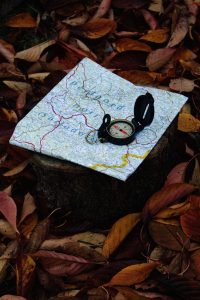
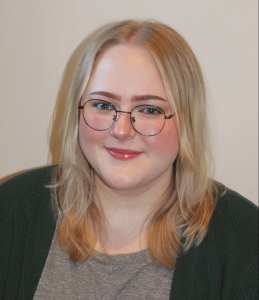 Annie Stockmal is a second-year graduate student in the Communication Department and Graduate Assistant in Falvey Library.
Annie Stockmal is a second-year graduate student in the Communication Department and Graduate Assistant in Falvey Library.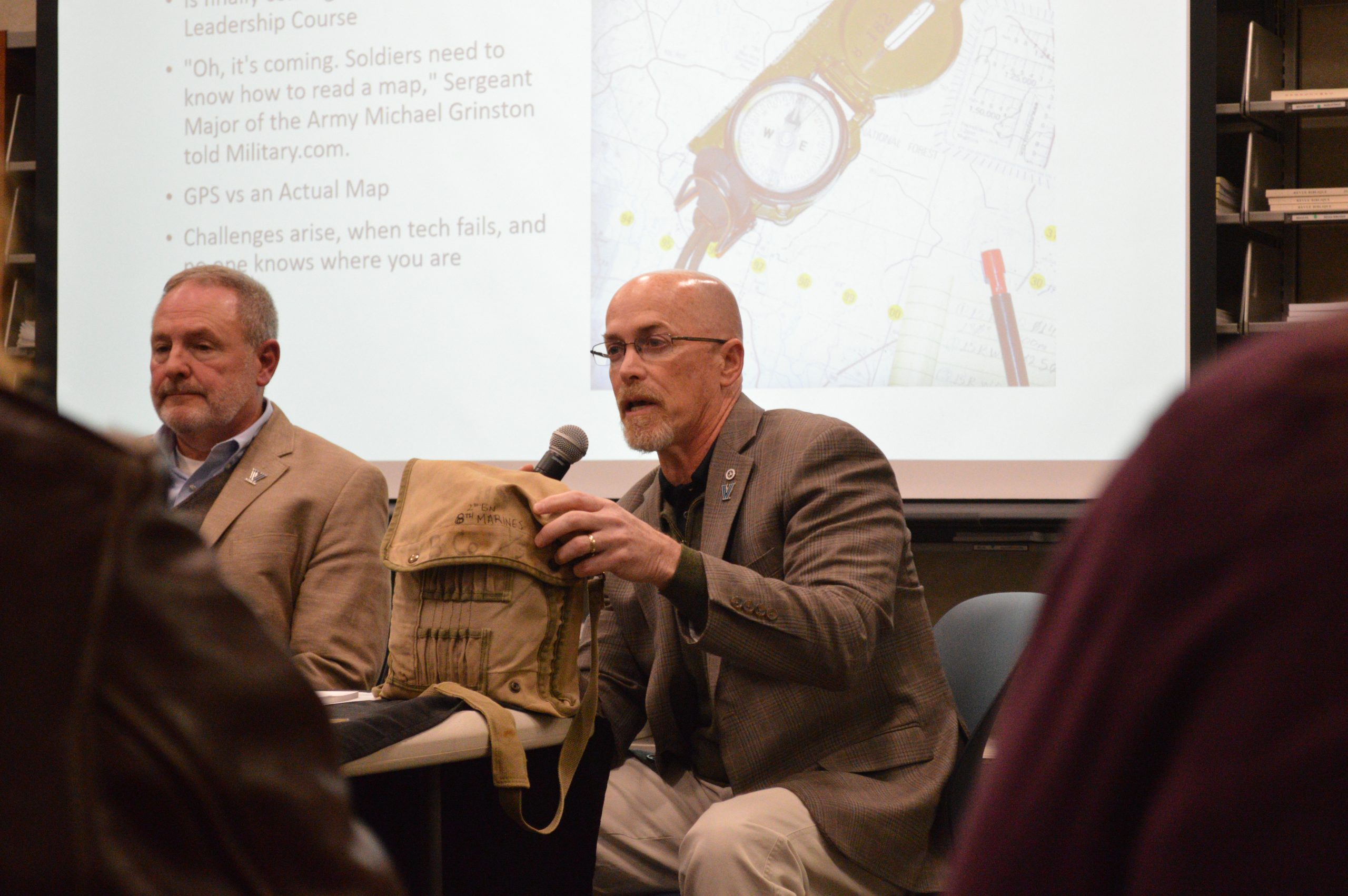
 Recognizing that young Americans have a gap in their understanding of geography and their roles as global citizens, National Geographic “created Geography Awareness Week to raise awareness to this dangerous deficiency in American education and excite people about geography as both a discipline and as a part of everyday life… Each third week of November, students, families, and community members focus on the importance of geography by hosting events; using lessons, games, and challenges in the classroom; and often meet with policymakers and business leaders.”
Recognizing that young Americans have a gap in their understanding of geography and their roles as global citizens, National Geographic “created Geography Awareness Week to raise awareness to this dangerous deficiency in American education and excite people about geography as both a discipline and as a part of everyday life… Each third week of November, students, families, and community members focus on the importance of geography by hosting events; using lessons, games, and challenges in the classroom; and often meet with policymakers and business leaders.” something that can get you a job and make you money”. These comments troubled me for a while, but I always had a strong passion and interest in geography and maps since I was 13 years old, and I never wanted to give that up. I was always able to absorb a wealth of information from simply looking at a map and see the value that most others don’t. Despite the question marks I trudged on in my academic career as a geography major at Villanova.
something that can get you a job and make you money”. These comments troubled me for a while, but I always had a strong passion and interest in geography and maps since I was 13 years old, and I never wanted to give that up. I was always able to absorb a wealth of information from simply looking at a map and see the value that most others don’t. Despite the question marks I trudged on in my academic career as a geography major at Villanova. He introduced me to a team of people in India that were working on creating child friendly villages. The goal of these villages were to stop child labor in the mines and ensure that 100% of the children had access to education. I used Arc Map to create a map of which villages have a child school enrollment rate less than 75%. This showed spatial patterns of which parts of this area had higher and lower rates of education access. This was extremely helpful to the team. Right now, we are in the planning stages for my senior project. We hope to find a spatial connection between child labor and deforestation to bring more awareness to the areas we are working in and hopefully gain the support of companies that see deforestation as an important issue. I am especially excited to become more involved because it is very fulfilling to use my skills to help create a better world for children in India.
He introduced me to a team of people in India that were working on creating child friendly villages. The goal of these villages were to stop child labor in the mines and ensure that 100% of the children had access to education. I used Arc Map to create a map of which villages have a child school enrollment rate less than 75%. This showed spatial patterns of which parts of this area had higher and lower rates of education access. This was extremely helpful to the team. Right now, we are in the planning stages for my senior project. We hope to find a spatial connection between child labor and deforestation to bring more awareness to the areas we are working in and hopefully gain the support of companies that see deforestation as an important issue. I am especially excited to become more involved because it is very fulfilling to use my skills to help create a better world for children in India. Services takes requests from all around the world for mapping projects on ArcGIS Pro and dashboards on Power BI. Using these programs helps bring data collected in the field to life and can help developing countries in seemingly endless ways such as disaster relief, planning, and making information more readily and easily available. As an intern, I am especially helpful to the program because I have access to technology that many people don’t, and I have the free time to work on projects that they’ve been unable to devote time to.
Services takes requests from all around the world for mapping projects on ArcGIS Pro and dashboards on Power BI. Using these programs helps bring data collected in the field to life and can help developing countries in seemingly endless ways such as disaster relief, planning, and making information more readily and easily available. As an intern, I am especially helpful to the program because I have access to technology that many people don’t, and I have the free time to work on projects that they’ve been unable to devote time to.












 My name is Charlotte Shade ’19 MSES, and I am currently a data analyst for the City of Boston. The main goal of my position is to help other city departments serve the public. I use GIS and other ESRI products almost daily!
My name is Charlotte Shade ’19 MSES, and I am currently a data analyst for the City of Boston. The main goal of my position is to help other city departments serve the public. I use GIS and other ESRI products almost daily!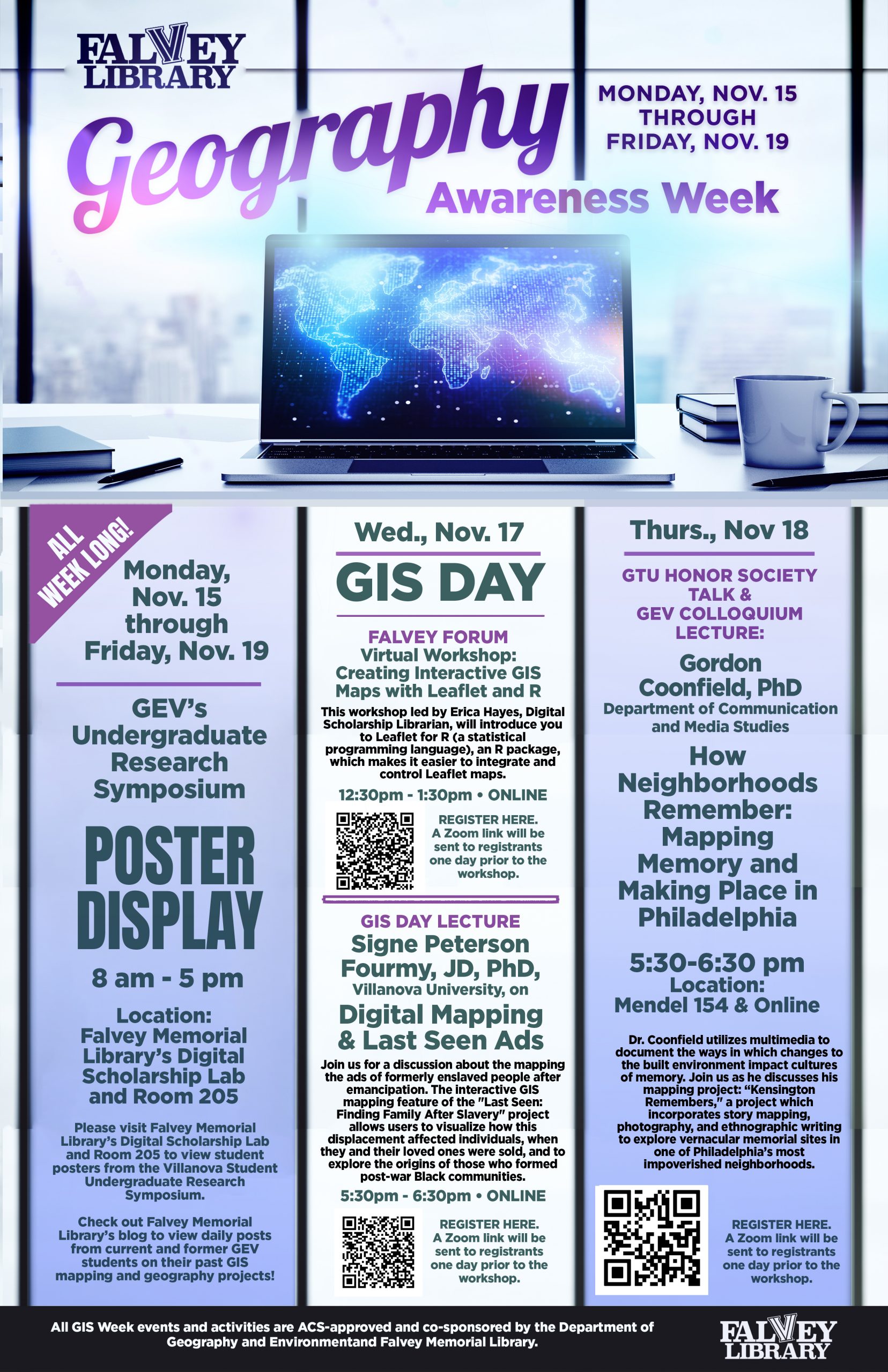
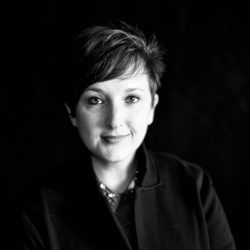 Kallie Stahl ’17 MA is Communication and Marketing Specialist at Falvey Memorial Library.
Kallie Stahl ’17 MA is Communication and Marketing Specialist at Falvey Memorial Library.